One Person Business Ideas That Make Money

Look, I’m not gonna sugarcoat it, the whole “be your own boss” thing? It’s terrifying.
But here’s what’s more terrifying: staying stuck in a 9-to-5 that drains your soul while someone else profits from your hard work.
I’ve spent years studying financial models, dissecting business structures, and watching entrepreneurs either soar or crash. And honestly?
The one-person business model is probably the smartest entry point into entrepreneurship right now.
Why? Because you’re not drowning in overhead costs, managing drama-filled teams, or juggling complex partnerships that go south faster than milk in summer.
This isn’t some fluffy “follow your dreams” speech.
We’re talking cold, hard cash opportunities that you can actually execute without remortgaging your house or pitching to investors who’ll own half your soul.
Ready to see how real people are banking serious money solo? Let’s get into it.
What Is The One-Person Business Model?
Simple math: one person + one business idea = zero employees needed.
A one-person business (also called a solopreneur venture) means you’re the CEO, the intern, the marketing department, and yeah, sometimes the janitor too.
But here’s the beautiful part: you keep 100% of the profits, make every decision instantly, and pivot faster than corporations stuck in endless committee meetings.
From a financial standpoint, this model is genius for risk management. Your operating expenses stay minimal because you’re not paying salaries, benefits, or office rent.
Plus, your tax situation becomes way simpler (trust me, as someone with a finance degree, I’ve seen how messy multi-partner tax returns get).
Think about it: companies like Basecamp started with basically one person grinding away. Now they’re worth millions. The model works if you work it.
How To Start A Successful One-Person Business In 6 Steps
1. Choose Your Business Idea
Here’s where most people mess up: they chase money instead of finding the intersection between profitability and personal skill.
I’ve watched countless entrepreneurs burn out because they picked a “hot” business idea they hated.
Listen, if you despise what you’re doing, no amount of money makes it worth it. You’ll quit before you see real returns.
Start here:
- List your actual skills (not what you wish you were good at)
- Identify problems you naturally solve for friends and family
- Check if people will PAY for that solution
Pro tip from my finance background: use the “3 AM test.” If you can’t talk about this business idea at 3 AM without falling asleep, it’s not the right idea.
Market research doesn’t need to be complicated. Go to Reddit, Facebook groups, or forums where your target audience hangs out.
What are they complaining about? That’s your goldmine.
2. Write A Business Plan

Okay, before you roll your eyes, I know business plans sound boring.
But here’s the reality: your business plan is basically your financial GPS.
Without it, you’re just wandering around hoping to stumble onto success.
Your plan should cover:
- Executive summary (what you’re doing in 2-3 sentences)
- Market analysis (who’s buying and why)
- Revenue model (how money flows in)
- Cost structure (where money flows out)
- Financial projections (realistic 1-year and 3-year forecasts)
As someone who’s analysed hundreds of business models, I can tell you the businesses that survive past year one? They had a plan.
The ones that crashed? They “figured it out as they went.”
You don’t need 50 pages. Even a solid 5-page business plan beats no plan.
FYI, this document also forces you to spot problems BEFORE they drain your bank account.
3. Register Your Business
Listen, I get it. Paperwork sucks. But skipping business registration is like driving without insurance; you’re one accident away from losing everything.
Here’s why registration matters financially:
When your business is registered (as an LLC or sole proprietorship), you create legal separation between personal and business assets. Translation?
If someone sues your business, they can’t automatically seize your house, car, or personal savings.
Plus, registered businesses can:
- Open business bank accounts (crucial for clean accounting)
- Deduct business expenses on taxes (hello, tax savings!)
- Build business credit separate from personal credit
- Look legit to clients and partners
The cost? Usually $50-$500, depending on your state or country. That’s pocket change compared to the protection and tax benefits you get.
4. Create A Business Bank Account
Real talk: mixing business and personal finances is financial suicide.
I’ve seen it happen too many times. Someone starts making money, keeps everything in their personal account, then tax season arrives, and they’re scrambling through months of transactions trying to figure out what was business vs. personal.
The IRS loves this mess because it triggers audits.
Open a separate business account immediately. Here’s what you gain:
- Clear profit tracking (you know exactly what the business makes)
- Simplified tax filing (your accountant will thank you)
- Professional appearance (clients see “ABC Consulting LLC”, not “John Smith”)
- Audit protection (clean records if the IRS comes knocking)
Most banks offer free business checking for solopreneurs.
Check out options like Chase Business Complete Banking or Novo for online-only accounts with zero monthly fees.
5. Take Advantage Of Technology
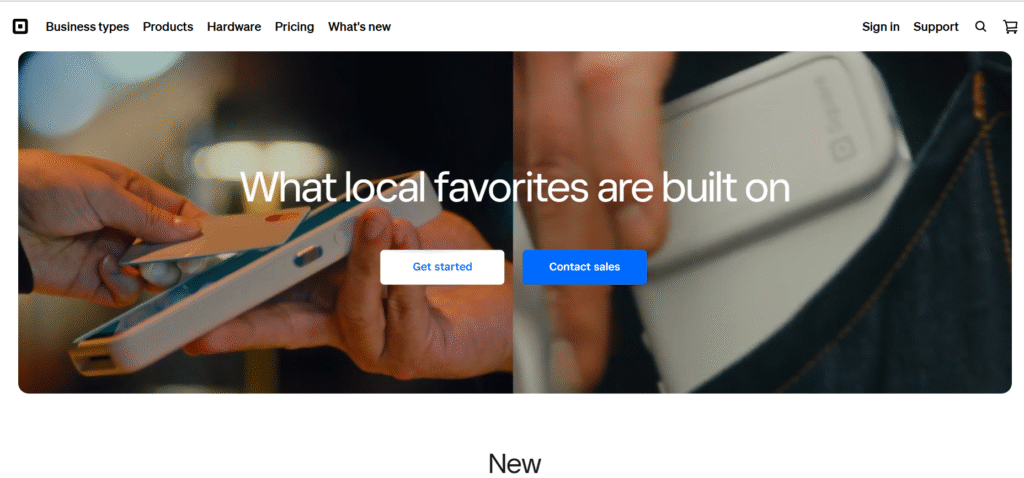
Technology is literally your unfair advantage as a one-person business.
Tools that used to cost thousands of dollars (or require full-time employees) now cost $10/month or less.
We’re living in the golden age for solopreneurs, and if you’re not using these tools, you’re working 10x harder than necessary.
Essential tools for one-person businesses:
- Payment processing: Square or Stripe (accept payments anywhere)
- Accounting: Wave (completely free) or QuickBooks Self-Employed
- Project management: Notion (organise everything) or Trello
- Email marketing: ConvertKit or Mailchimp
- Invoicing: FreshBooks or built-in Square invoicing
- Cloud storage: Google Drive or Dropbox
I personally use Square for payments because they only charge 2.6% + $0.10 per transaction with no monthly fees.
Compare that to traditional merchant accounts charging $50-100/month PLUS transaction fees. That’s $600-1,200 saved annually.
The math matters when you’re running lean.
6. Prioritise Time Management
Here’s the harsh truth: time management will make or break your one-person business.
You don’t have a team to delegate to. Every hour wasted is money lost.
I learned this the hard way when I spent my first month as a solopreneur “staying busy” instead of focusing on revenue-generating activities.
Time management strategies that actually work:
- Time blocking: Schedule specific tasks for specific hours (treat them like meetings)
- The 80/20 rule: Focus on the 20% of activities generating 80% of results
- Batch similar tasks: Answer all emails once daily, create content in bulk
- Use the “eat the frog” method: Do your hardest/most important task first
Apps like ClickUp, TickTick, or simple Google Tasks keep you organised without overwhelming you with features.
Personally? I spend 70% of my time on client work and revenue generation, 20% on marketing, and 10% on admin stuff.
Track your time for one week, and you’ll be shocked at where hours disappear.
20 One-Person Business Ideas You Can Start
Now for the good stuff, actual business ideas that print money when done right.
1. Become An Influencer
Before you say “that ship has sailed”, it hasn’t. The influencer market is projected to hit $24 billion by 2025.
Here’s the financial reality: influencers with just 10,000 engaged followers can charge $100-500 per sponsored post.
Post 4 sponsored posts per month? That’s $400-2,000 monthly.
Scale to 100,000 followers and you’re looking at $1,000-10,000 per post.
Real example: My friend Sarah started a personal finance Instagram in 2022.
She hit 15,000 followers by month 10 and now makes $3,500/month just from brand deals, plus another $2,000 from affiliate commissions.
The secret? Niche down hard. “Lifestyle influencer” is too broad.
“Budget travel for remote workers” or “meal prep for busy parents”, that’s specific enough to attract loyal followers and brands willing to pay.
Platforms to focus on:
- Instagram (visual content)
- TikTok (short-form video)
- YouTube (long-form content)
- Twitter/X (thought leadership)
2. Sell Digital Products
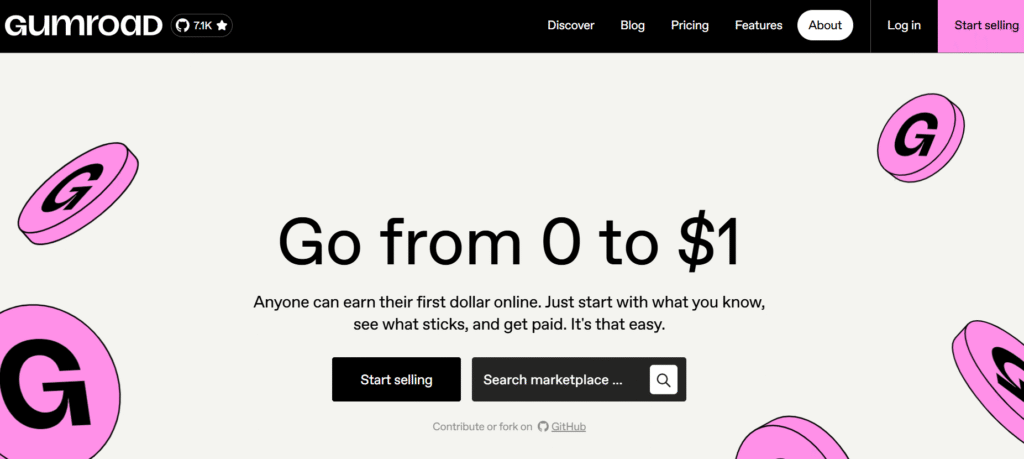
If you’ve ever dreamed of making money while you sleep, selling digital products is one of the smartest and most profitable ways to do it.
Unlike physical products that require storage, packaging, and constant restocking, digital products only need to be created once and then they can be sold again and again, forever.
It’s the definition of passive income with near-zero overhead.
Why This Business Model Works Financially
Think of it like this: when you sell an ebook or a digital planner, your only major cost is the time spent creating it.
Once the product is ready, you can sell it to 10 people or 10,000 people without any increase in production cost.
That’s what makes digital products so powerful your profit margin can easily reach 90–95%, even after small platform fees from sites like Gumroad, Etsy, or Payhip.
Compare that to a physical business where you need to buy raw materials, pay for packaging, manage returns, and handle shipping all of which eat into your profits.
Digital products, on the other hand, scale infinitely with almost no additional effort.
Turning Knowledge into Passive Income
In early 2023, I created a simple financial budgeting spreadsheet to help young professionals track their spending. It took about 8 hours to build using Google Sheets.
I listed it for $27 on Gumroad, and over time, it’s sold more than 430 copies bringing in over $11,600 in profit.
Here’s the best part: I haven’t touched the product since the day I uploaded it.
The spreadsheet keeps selling automatically while I sleep, thanks to Pinterest traffic and keyword-optimized product descriptions.
That’s the beauty of digital products you work once and keep earning long after the work is done.
Digital Product Ideas That Actually Sell
If you’re not sure where to start, here are proven ideas that consistently perform well online:
- Notion templates – ($5–$50) for productivity, planning, or habit tracking.
- Canva templates – ($10–$30) for small business owners or social media creators.
- Lightroom presets – ($15–$50) for photographers and influencers.
- Spreadsheets & business tools – ($10–$100) for budgeting, analytics, or content planning.
- Ebooks or guides – ($7–$97) for sharing your expertise in a topic.
- Online courses – ($50–$997) using platforms like Teachable or Podia.
These products are especially popular on Pinterest because users are already in a planning and buying mindset.
If you use appealing visuals and keywords like “printable planner,” “editable template,” or “instant download,” your pins can reach millions of targeted buyers.
Practical Takeaways for Beginners
Reinvest in quality. As sales grow, reinvest in better design, marketing, or even freelancers to help you scale.
Start small, start fast. Don’t overthink your first product even a simple digital checklist can make money.
Use the right platforms. Begin with free or low-fee options like Gumroad or Etsy before moving to advanced setups like Teachable or Podia.
Leverage Pinterest SEO. Create eye-catching pins and use searchable titles like “Budget Planner Spreadsheet” or “Content Calendar Template.”
Automate sales. Use email tools like ConvertKit to deliver your digital products instantly and build relationships with buyers.
3. Start An Affiliate Website
Affiliate marketing simply means recommending products you already use and earning money when people buy them through your special link.
It’s one of the easiest ways to make money online because you don’t need to create or ship any product.
The affiliate marketing industry is now worth over $17 billion globally, and it keeps growing because it works for everyone brands get more sales, customers find trusted recommendations, and you get paid for helping both sides.
Affiliate marketing is literally recommending products you already use and getting paid when people buy through your link. It’s that simple.
The affiliate marketing industry is worth $17 billion globally, and it’s growing because it works for everyone: brands get sales, customers get recommendations, and you get commissions.
Here’s the financial model:
You create a website focused on a specific niche (hiking gear, productivity tools, pet supplies, whatever). Write helpful content about products in that niche.
You include affiliate links. People click, buy, and you earn 5-50% commission depending on the program.
Take Lisa, for example. She started a small blog reviewing dog toys and training tools after adopting her golden retriever. In the beginning, she made less than $100 a month.
But as her website grew and more dog owners trusted her reviews, her income jumped to over $3,000 per month from affiliate links all while working from home.
A big success story is The Wirecutter, which began as one man reviewing tech products. It later sold to The New York Times for $30 million.
That shows what’s possible if you stay consistent and build trust.
Even small affiliate sites can make anywhere from $2,000 to $10,000 monthly, depending on their traffic and niche.
Best affiliate programs to join:
- Amazon Associates: 4–10% commissions on millions of products.
- ShareASale: Access to thousands of brands across every niche.
- Impact: Great for higher-tier and global brands.
- Software companies: Many offer 20–40% recurring commissions, meaning you keep earning as long as the customer stays subscribed.
Example: the website The Wirecutter (now owned by The New York Times) started as basically one guy reviewing products. It sold for $30 million.
Obviously, that’s extreme, but even smaller affiliate sites make $2,000-10,000 monthly.
Best affiliate programs:
- Amazon Associates (4-10% commissions on everything)
- ShareASale (thousands of brands)
- Impact (higher-tier brands)
- Software companies often have 20-40% recurring commissions
Start with WordPress + cheap hosting from Bluehost or SiteGround ($3-6/month), and you can build a profitable affiliate site for under $100 startup cost.
4. Get Into Real Estate
Real estate isn’t just for rich people anymore. The barrier to entry has dropped significantly thanks to new investment options.
A few years ago, I was stuck in a financial rut working hard but never really moving forward.
One day, a friend casually mentioned he made money renting out a small apartment he owned.
That conversation changed everything for me.
I started small too bought a rundown duplex using a mix of savings and a small loan. I fixed one unit and rented it out while living in the other.
Within months, the rent covered my mortgage. A year later, I refinanced and bought another property.
That was my turning point. Real estate didn’t just boost my earnings it gave me stability, freedom, and confidence.
I went from counting every penny to building an income that grows even while I sleep.
Traditional route: Save up for a down payment (usually 20% of property value), buy rental property, collect rent that covers mortgage + expenses, profit from monthly cash flow and long-term appreciation.
A $200,000 rental property might require a $40,000 down payment, but could generate $500-1,500 monthly cash flow after all expenses.
That’s a 15-45% annual return on your initial investment. Show me a savings account that pays that :/
No-money route: Real Estate Investment Trusts (REITs) let you invest in real estate with as little as $10. REITs are like stocks but for real estate portfolios.
They typically pay 4-8% annual dividends.
Platforms like Fundrise (minimum $10) or RealtyMogul (minimum $1,000) make real estate investing accessible to everyone.
I have $15,000 in Fundrise REITs that generate about $900 annually in passive income.
Not life-changing, but it beats my savings account paying 0.5%.
5. Become A Writer Or Editor
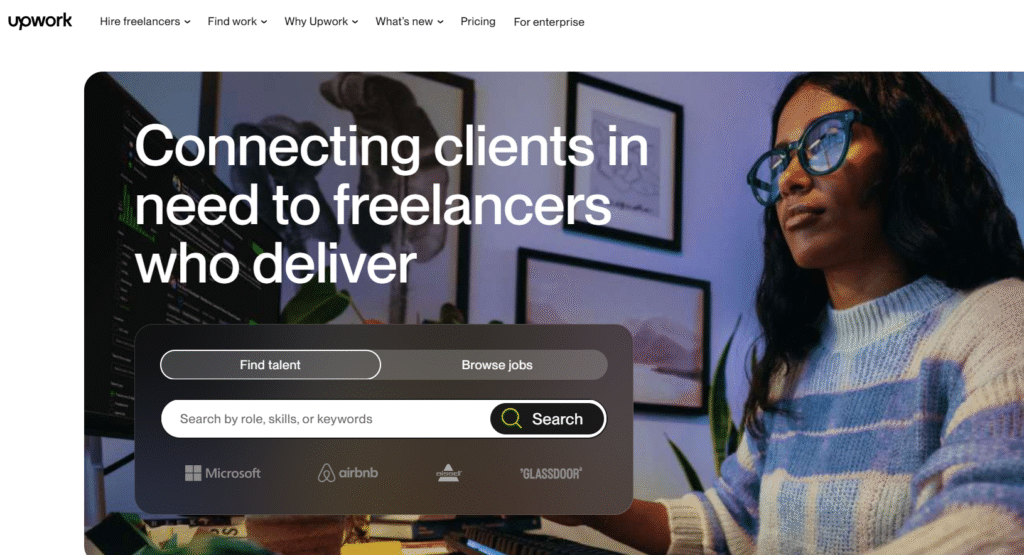
If you can string sentences together coherently, you can make money writing.
The content marketing industry is worth $66 billion because every business needs content, blog posts, website copy, social media captions, email sequences, product descriptions, case studies, white papers… the list goes on.
Realistic earning potential:
- Beginner writers: $0.05-0.10 per word ($50-100 per 1,000-word article)
- Intermediate writers: $0.15-0.30 per word ($150-300 per article)
- Expert/specialised writers: $0.50-2.00 per word ($500-2,000 per article)
Write just two articles weekly at intermediate rates and you’re making $2,400-4,800 monthly. That’s $28,800-57,600 annually from a one-person writing business.
Find clients on:
- Upwork (competitive but huge client base)
- Fiverr (good for building a portfolio)
- Contently (higher-end clients)
- Cold pitching to businesses directly (highest pay)
Pro tip: Specialise in one industry (finance, healthcare, SaaS tech) and you can charge 2-3x more because specialised knowledge is valuable.
6. Develop Apps
The app economy is huge worth over $935 billion in 2023 and still growing fast.
Now, let’s be real not everyone can code, but if you have programming skills (or you’re willing to learn), developing apps can be one of the most profitable one-person businesses you can start.
Here are a few proven monetization models:
- Paid downloads: Charge users a small one-time fee, usually between $0.99 and $9.99.
- Freemium: Offer a free version and charge for premium upgrades or features ($2.99–$19.99/month).
- Ad-supported: Keep the app free and earn from ads shown per impression or click.
- In-app purchases: Offer digital extras tools, lives, coins, or customizations for users to buy.
Real-life example:
Remember the viral game Flappy Bird? It was developed by a single person and earned over $50,000 per day from ads before being taken down.
That’s an extreme case, but even smaller apps can bring in $500 to $5,000 monthly once they gain traction.
No coding skills yet? No problem. You can learn through platforms like Codecademy, freeCodeCamp, or Udemy. Many full beginner-friendly courses cost less than $100.
Alternatively, you can partner with a developer offer them a share of the profits while you handle marketing and monetization.
This kind of partnership can turn an idea on paper into a real income-generating product.
It taught me something powerful: you don’t need to build the next billion-dollar app to make real money.
Sometimes, one small idea, built well and marketed smartly, is enough to change your financial story.
The app economy is absolutely massive,$935 billion in 2023 and growing.
Now, I’m not saying everyone can develop apps (you need coding skills), but if you can code or you’re willing to learn, this is one of the most lucrative one-person businesses.
Monetisation models:
- Paid downloads: Charge $0.99-9.99 upfront
- Freemium: Free app with premium features ($2.99-19.99/month)
- Ad-supported: Free app that shows ads (you earn per impression/click)
- In-app purchases: Free download, pay for extras
Example: the app Flappy Bird was built by one person and made $50,000 PER DAY from ads before the creator removed it. Obviously, that’s an outlier, but even modest apps earn $500-5,000 monthly.
If you don’t code, you can learn through Codecademy, freeCodeCamp, or Udemy courses for under $100.
Or partner with a developer (give them equity in exchange for building), and you focus on marketing and monetisation.
7. Become A Graphic Designer

Every. Single. Business. Needs. Graphic. Design.
Social media posts, logos, website graphics, ads, presentations, packaging, merchandise, the demand is endless.
Earning potential:
- Logo design: $100-2,000 per project
- Social media graphics: $50-300 per set
- Complete brand identity: $500-5,000
- Ongoing retainer clients: $500-3,000 monthly
You don’t need a fancy degree. Learn Adobe Photoshop, Illustrator, or even Canva Pro (seriously, many clients don’t care what tool you use as long as the design looks professional).
Free learning resources:
- YouTube (tons of free design tutorials)
- Skillshare (subscription service with thousands of classes)
- Adobe’s own tutorials
Build a portfolio on Behance or Dribbble, then find clients on Upwork, Fiverr, or by reaching out to small businesses directly.
I know a designer who quit her $45,000/year job and now makes $85,000 working from home with 4-5 retainer clients. Same skills, better income, way better lifestyle.
8. Resell Items
I started reselling almost by accident. I was cleaning out my closet and listed a few unused sneakers online.
They sold within a day for more than I expected. That little spark made me curious. I began visiting thrift shops every weekend, looking for things, people undervalued.
One day, I found a vintage camera for $25. After cleaning it up and taking better photos, I sold it for $180. That was the moment I realized reselling wasn’t just luck it was a real business opportunity.
Within a few months, I was flipping items consistently and earning enough to cover my monthly bills.
It felt empowering like turning everyday finds into streams of income.
And the best part? You don’t need a huge budget or fancy tools just a good eye, patience, and a willingness to learn what sells.
Retail arbitrage is the fancy term for “buy low, sell high.”
Here’s how it works: you find items at thrift stores, garage sales, clearance sections, or liquidation sites for cheap. You flip them on Amazon, eBay, Facebook Marketplace, or Poshmark for profit.
Real numbers:
- Buy a brand-name purse at Goodwill for $8
- Sell it on Poshmark for $65
- After shipping and fees, profit $40-45
Do this 20 times monthly and you’re adding $800-900 to your income. Scale up and people make $3,000-10,000 monthly from reselling.
Best items to flip:
- Brand-name clothing and accessories
- Electronics (test them first!)
- Vintage items and collectables
- Books (especially textbooks and rare editions)
- Tools and equipment
Apps to sell on:
- eBay (the biggest marketplace)
- Poshmark (clothing-focused)
- Mercari (everything)
- Facebook Marketplace (local sales, no shipping)
The startup cost can be as low as $50-100 to buy your first inventory batch.
9. Become A Virtual Assistant
When I started exploring online income options, I stumbled upon a post about virtual assistance. I had no idea people paid others to manage their inbox or schedule meetings.
Out of curiosity, I took a short online VA course and offered my services part-time.
My first client was a small business owner who needed help responding to customer emails and managing social media.
I earned $15 an hour not a fortune, but it felt incredible making money with just my laptop and internet connection.
Within six months, word-of-mouth referrals started rolling in. I built a small client base, learned new tools like Trello, Canva, and Slack, and gradually raised my rates.
Eventually, I was earning more than I did at my office job all from home.
That experience showed me something powerful: you don’t always need to start a business from scratch.
Sometimes, helping others run their business efficiently can be the doorway to your own financial freedom.
Virtual assistants (VAs) are basically remote administrative helpers.
The global VA market is worth $25.6 billion because businesses realised they don’t need full-time in-house assistants when they can hire skilled VAs for specific tasks.
Services VAs offer:
- Email management
- Calendar scheduling
- Social media management
- Data entry
- Customer service
- Bookkeeping
- Travel planning
- Research
Earning potential: $15-75 per hour, depending on skills and experience.
I built a small client base, learned new tools like Trello, Canva, and Slack, and gradually raised my rates. Eventually, I was earning more than I did at my office job all from home.
That experience showed me something powerful: you don’t always need to start a business from scratch.
Sometimes, helping others run their business efficiently can be the doorway to your own financial freedom.
I Start at $20/hour with three clients needing 10 hours weekly each. That’s $600/week or $2,400/month. But now I Build up to $40/hour with 30 hours of work weekly, and you’re making $62,400 annually.
Find VA jobs on:
The best part? You can often work with multiple clients simultaneously, diversifying your income streams.
10. Blogging
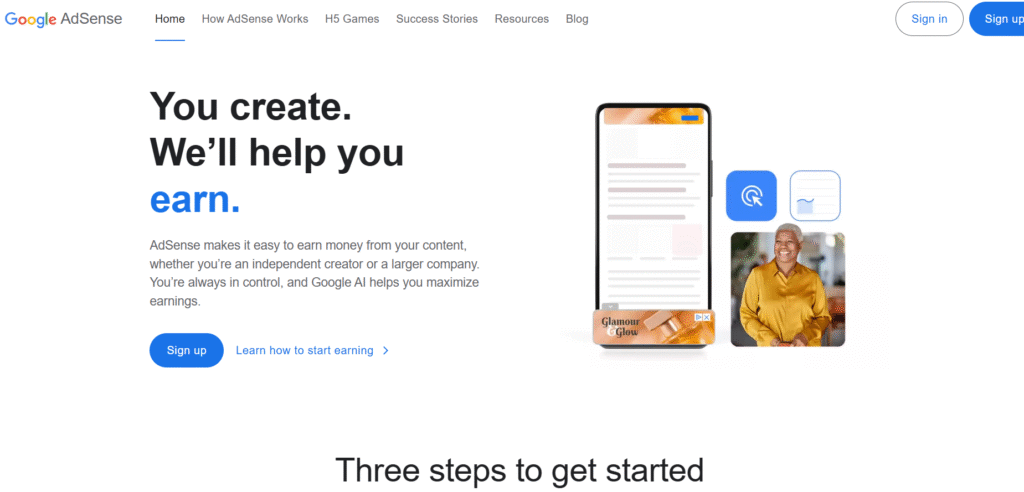
Blogging isn’t dead, it’s just evolved. The blogs making money now are strategic content businesses, not personal diaries.
How blogs make money:
- Display ads: Google AdSense, Mediavine, or Ezoic pay per 1,000 page views
- Affiliate marketing: Recommend products, earn commissions
- Sponsored posts: Brands pay $100-5,000+ per post
- Digital products: Sell courses, ebooks, templates
- Services: Use blog to attract consulting/freelance clients
Financial reality: A blog with 50,000 monthly page views can easily generate $1,500-5,000 monthly. Get to 200,000 page views and you’re looking at $5,000-15,000 monthly.
Yes, it takes time to build (usually 12-24 months to see significant income), but once it’s established, it’s largely passive income.
I started a finance blog in 2021. First year? Made $300 total. Second year? $18,000. Third year? On track for $45,000. The compound effect is real.
Start your blog with Bluehost or SiteGround hosting ($3-6/month) plus a WordPress site (free). Total startup cost: under $50.
11. Content Creation
Let’s be real — content creation is one of the biggest money-makers right now.
Social media platforms like YouTube, TikTok, Instagram, Facebook, and even Snapchat are literally paying creators because content keeps users hooked. Every video, reel, or post you see is part of a multi-billion-dollar creator economy.
How creators make money:
- Ad revenue: YouTube pays per view, and TikTok has a creator fund.
- Brand sponsorships: Companies pay for product mentions or shoutouts.
- Affiliate links: You earn a commission when followers buy through your links.
- Digital products: Sell your own eBooks, courses, or templates.
Realistic earnings:
- 10,000 followers → $50–$500 per sponsored post
- 100,000 followers → $500–$5,000 per post
- 1 million followers → $5,000–$20,000+ per post
And that’s not even counting ad revenue. A YouTube channel with around 100,000 subscribers can easily make $2,000–$10,000 per month from ads alone.
The best part? You already have what you need your smartphone. Learn quick editing with free apps like CapCut or InShot, and you’re ready to go.
One day, a short motivational clip I posted unexpectedly hit 50,000 views overnight.
A few brands reached out asking if I could feature their products in future videos that’s when it clicked. This wasn’t just a hobby anymore; it was a business.
Within a few months, I was earning extra income from brand deals and affiliate links.
What started as simple content sharing turned into a steady stream of income and the best part? I was doing something I genuinely enjoyed.
The barrier to entry is literally zero; you already have a smartphone capable of creating content. Learn basic editing with free apps like CapCut or InShot.
12. Online Tutoring
The online education market hit $185 billion in 2023 and continues growing.
As an online tutor, you’re selling your knowledge and teaching skills. No inventory, no overhead, just you, your expertise, and an internet connection.
Subjects in high demand:
- Math and science (especially test prep)
- English/ESL
- Programming and tech skills
- Music lessons
- Languages
- Business skills
Earning potential: $20-100+ per hour, depending on subject and expertise level.
Tutor 15 hours weekly at $40/hour, and you’re making $2,400/month or $28,800 annually. Scale to 25 hours weekly and you’re at $48,000 annually from one-on-one tutoring.
I discovered online tutoring when a friend told me about teaching English remotely. At first, I was nervous I’d never taught anyone formally before.
But I signed up on a tutoring platform and started small, helping high school students with English essays and basic grammar.
My first few sessions were awkward, but I quickly got comfortable. Within a month, I had regular students and seeing their progress became incredibly rewarding.
I was earning around $500 monthly, just from a few hours a week after work.
Eventually, I expanded to more advanced writing and speaking lessons, and my income nearly doubled.
What surprised me most wasn’t the money it was how much confidence and purpose it gave me.
I realized that knowledge, when shared, becomes more powerful and profitable.
Platforms to join:
- VIPKid (teach English to Chinese students)
- Wyzant (various subjects)
- Chegg Tutors (college-level subjects)
- Preply (language tutoring)
Or create your own courses on Teachable or Udemy and sell them passively.
13. Become A Legal Coach
Legal coaching is a growing niche that sits between full legal representation and total DIY.
As a legal coach (you need relevant credentials/experience), you help individuals or small businesses understand legal documents, navigate processes, and make informed decisions WITHOUT providing official legal advice (that requires a law license).
Services legal coaches offer:
- Document review and explanation
- Legal process guidance (filing paperwork, court procedures)
- Contract negotiation coaching
- Small business compliance guidance
Earning potential: $50-200 per hour, depending on specialisation.
The demand is massive because traditional lawyers are expensive ($250-500/hour), but people still need help understanding legal stuff. You’re the affordable middle ground.
Many legal coaches work 15-20 hours weekly and earn $3,000-8,000 monthly. That’s $36,000-96,000 annually from a flexible, knowledge-based business.
14. Podcasting
There are 464 million podcast listeners globally, and the industry is worth $23.56 billion.
How podcasts make money:
- Sponsorships: Brands pay $18-50 per 1,000 downloads
- Listener support: Patreon subscriptions
- Affiliate marketing: Promote products and earn commissions
- Premium content: Paid subscriptions for bonus episodes
- Your own products: Sell courses, books, services to your audience
Real numbers: A podcast with 10,000 downloads per episode can charge $180-500 per sponsor read. Two sponsors per episode, 4 episodes monthly = $1,440-4,000 monthly revenue.
Startup costs are minimal:
- USB microphone: $50-150 (Blue Yeti is popular)
- Free recording software: Audacity or GarageBand
- Podcast hosting: Buzzsprout or Anchor ($12-24/month)
Total investment: under $200 to start a professional-sounding podcast.
15. Online Fitness Training
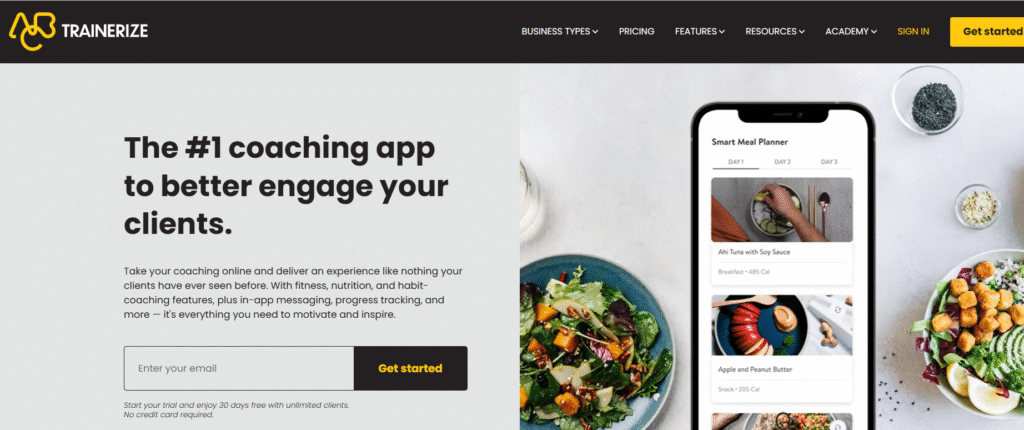
The online fitness market is projected to reach $79.8 billion by 2026.
As an online fitness trainer, you create workout programs, nutrition plans, and accountability systems for clients worldwide, no gym lease required.
Monetisation models:
- One-on-one coaching: $100-500 monthly per client
- Group programs: $30-100 monthly per person (scale to 50+ people)
- Pre-recorded programs: One-time fee of $50-200
- Membership site: Monthly subscription ($20-50) with workout libraries
Financial example: Work with 10 one-on-one clients at $200/month = $2,000. Add 30 group program members at $50/month = $1,500. Sell 10 pre-recorded programs monthly at $100 = $1,000. Total = $4,500 monthly or $54,000 annually.
Platforms to use:
- Trainerize (client management)
- Instagram/TikTok (free marketing and client attraction)
- Zoom (live training sessions)
The certification investment is $300-1,000, but that’s quickly recovered with just a few clients.
16. Digital Marketing
Businesses NEED digital marketing, but most can’t afford full marketing agencies charging $5,000-20,000 monthly. That’s where you come in as a one-person digital marketing consultant.
Services you can offer:
- SEO (Search Engine Optimisation): Help websites rank on Google
- Social media management: Create and post content
- Email marketing: Build and manage email campaigns
- Paid advertising: Run Facebook, Google, or TikTok ads
- Content marketing: Create blogs, videos, and infographics
Earning potential:
- Basic social media management: $500-2,000 per client monthly
- SEO services: $750-3,000 monthly per client
- Ad management: $1,000-5,000 monthly (often 10-20% of ad spend)
Land 3-4 clients paying $1,500 monthly each, and you’re making $4,500-6,000 monthly ($54,000-72,000 annually).
Learn digital marketing through:
- Google Digital Garage (free courses)
- HubSpot Academy (free certifications)
- Meta Blueprint (Facebook/Instagram ads)
The barrier to entry is low, just knowledge and proven results.
17. Social Media Management
Similar to digital marketing but focused specifically on social media platforms.
Businesses know they need to be on Instagram, TikTok, Facebook, LinkedIn, etc., but they don’t have time to create content daily. That’s where you come in.
Your responsibilities:
- Create content (graphics, videos, captions)
- Schedule and post consistently
- Engage with followers
- Analyse performance metrics
- Develop growth strategies
Pricing models:
- Per platform: $300-800 monthly
- Full package (3-4 platforms): $1,000-3,000 monthly
- Per post: $20-100 (less scalable)
Manage social media for 5 businesses at $1,200 monthly each, and you’re making $6,000 monthly or $72,000 annually.
Tools you’ll need:
- Canva Pro (graphic design – $12.99/month)
- Buffer or Hootsuite (scheduling – $15-30/month)
- CapCut (video editing – free)
Total tool investment: under $50/month, easily covered by one client.
18. Resume Writing
Job seekers are desperate for resumes that actually get them interviews. The resume writing industry is worth $200+ million because hiring is competitive, and people need every advantage.
As a resume writer, you craft compelling resumes, cover letters, and LinkedIn profiles that showcase your clients’ qualifications and beat applicant tracking systems (ATS).
Services and pricing:
- Basic resume rewrite: $100-300
- Complete package (resume + cover letter + LinkedIn): $300-800
- Executive-level resumes: $500-1,500
- Rush service: Add a 25-50% surcharge
Write 3 resumes weekly at $250 average, and you’re making $3,000 monthly or $36,000 annually. Not bad for a business you can run from your laptop.
Learn resume writing through:
- Study successful resume examples
- Learn ATS optimisation
- Understand industry-specific keywords
- Take courses on Udemy or LinkedIn Learning
Market yourself on LinkedIn, Facebook groups for job seekers, or platforms like Fiverr.
19. Web Development
The demand for websites will never disappear. Every business, nonprofit, creator, and organisation needs a website. Many need custom functionality that template builders can’t provide.
Services web developers offer:
- Simple websites: $500-2,000
- E-commerce sites: $2,000-10,000
- Custom web applications: $5,000-50,000+
- Website maintenance: $100-500 monthly per client
Financial model: Build 2 custom websites monthly at $3,000 each = $6,000. Add 10 maintenance clients at $200/month = $2,000. Total = $8,000 monthly or $96,000 annually.
Learn web development:
- freeCodeCamp (completely free)
- The Odin Project (free)
- Codecademy ($20-40/month)
You can learn enough to build basic websites in 3-6 months of dedicated study.
Platforms to find clients:
20. Software Training
Software is getting more complex, and people are drowning. They need someone to teach them how to use Excel, QuickBooks, Salesforce, Adobe Creative Suite, or industry-specific tools.
As a software trainer, you create courses, tutorials, or offer one-on-one coaching on how to use specific software effectively.
Monetisation options:
- Online courses: $50-300 per course (sell to unlimited students)
- One-on-one training: $50-150 per hour
- Group workshops: $30-100 per person for live sessions
- Corporate training: $1,000-5,000 per day for business teams
Financial example: Create an Excel course and sell it on Udemy for $97. Udemy takes 50% when they promote it, so you get $48.50 per sale. Sell 100 copies, and that’s $4,850 from work you did once.
Plus, add 5 one-on-one clients weekly at $75/hour = $1,500 monthly. Combined revenue = $6,350 from the course + ongoing training.
Popular software to teach:
- Microsoft Excel (always in demand)
- QuickBooks (small business accounting)
- Adobe Creative Suite (Photoshop, Illustrator, Premiere)
- Salesforce (CRM software)
- Project management tools (Asana, Monday.com)
Record your courses using free OBS Studio screen recording software and a decent microphone ($50-100).
Final Thoughts
Running a one-person business means keeping things simple; you avoid the stress of managing teams or dealing with complicated supplier contracts. You make decisions quickly, keep most of your earnings, and work on your own terms.
That’s why research matters so much before you start. The businesses that last aren’t built on guesses; they’re built on understanding what the market needs and delivering it better than anyone else.